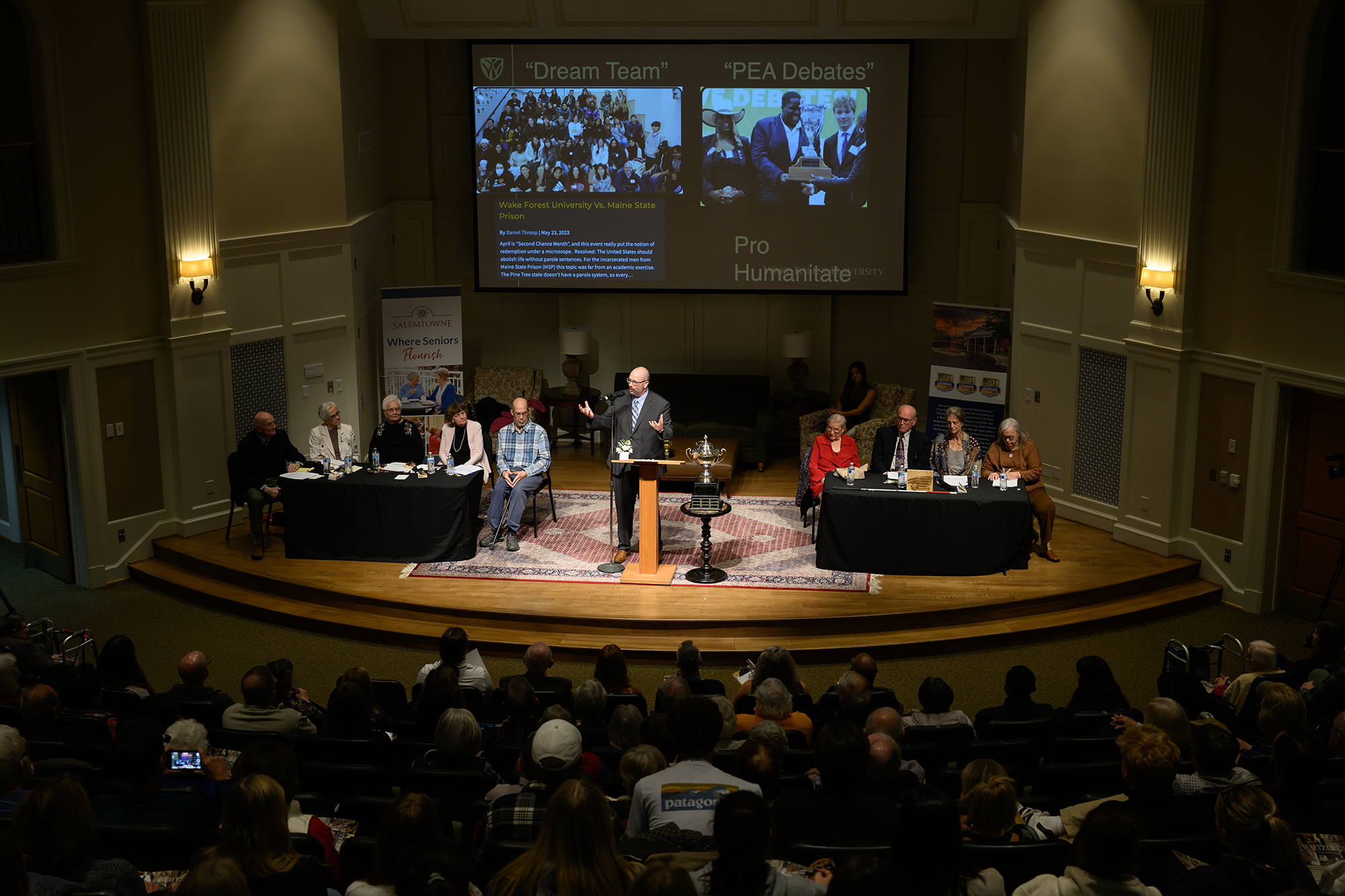Birds of a feather learn together
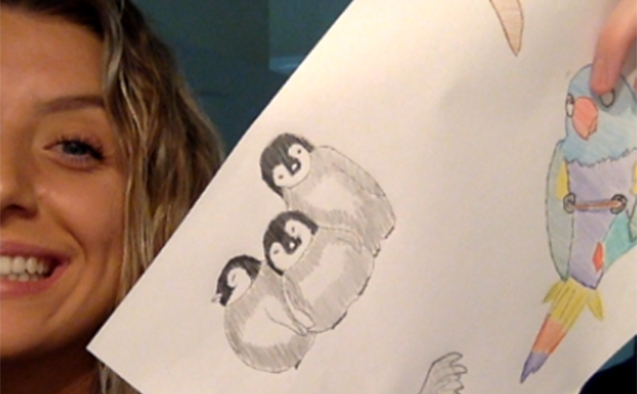
When first-graders at Brunson Elementary were learning about birds, 17 Wake Forest students visited their classrooms to connect the biology lessons with the arts by exploring how birds move and leading bird-themed creative projects.
“The students used poetry, dance, visual art and music to help anchor the lessons,” said Christina Soriano, associate provost of the arts and associate professor of dance who co-taught the class Integrating Arts and Movement into the Elementary Curriculum with associate professor of education Alan Brown.
“The activities the WFU students did took our bird study to the next level.” Lauren Hicks, teacher at Brunson Elementary
“They always asked when our ‘Wake friends’ were coming to visit,” said Hicks, one of four first-grade teachers who collaborated with the students.
The students had originally scheduled five visits to Brunson, but could only come twice before the coronavirus pandemic changed everyone’s plans.
“We had to reimagine our plans due to remote teaching, but we have been excited to find new ways for Brunson and Wake Forest students to engage from afar,” said Brown. It took about a week of figuring it out and a couple of Zoom class meetings to decide how to keep the collaboration going.
To bridge the distance after Wake Forest suspended in-person classes and Winston-Salem/Forsyth County school students began learning from home, the students in the class first recorded short greetings with words of encouragement for the first-graders using the social learning site Flipgrid. In his video message – recorded at home in Connecticut, first-year student Nico Benalcazar, talks about two of his favorite things – running and reading.
“This was a great experience for us,” said Benalcazar. He enjoyed working with the students face-to-face, but also valued the opportunity to continue connecting in cyberspace. “When we posted videos, it made everyone in the class super happy when they responded.”
The next step in the digital collaboration was to focus on learning about the birds. From a list including cardinals, ostriches, Atlantic Puffins, bald eagles, keel-billed toucans, rainbow lorikeets and many others, the college students and first-graders chose one to research. The Wake Forest students, as well as Brown and Soriano, posted short videos from their homes for the children, and the first-graders posted fun facts they learned about the birds they were studying.
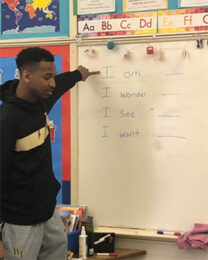
Andrien White
During their first in-person visit to Brunson, the Wake Forest students had written “I Am…” poems and created dances inspired by the movements a bird would make. The Brunson students created their own “I Am…” poems and dances.
In the poem senior Taylor Crandall posted to Flipgrid, she describes an imaginary bird that combines the characteristics of the snowy owl and the Vogelkop bowerbird.
“The kids have this energy and enthusiasm. We can channel that energy into something creative.” Taylor Crandall ('20)
“It has been wonderful to have this reason to think creatively and move creatively and then share it with others,” said Crandall, who is an English major and Schools, Education and Society minor.
She also completed an internship with the Winston-Salem/Forsyth County Schools this semester where she spent several mornings a week working with high school English classes at the Career Center. She continued that internship remotely once public schools closed due to the coronavirus.
To strengthen connections with the students, the Wake Forest group also posted short videos of bird-themed art projects to encourage creativity. One student showed how to draw a common cuckoo in two minutes; one showed the kids how to turn a face mask into a puffin’s beak; senior Caitlyn Della sketched and colored penguins and other birds. In one short video, senior Brandon Childress shows how an ostrich keeps its balance by extending its wings when it makes a turn.
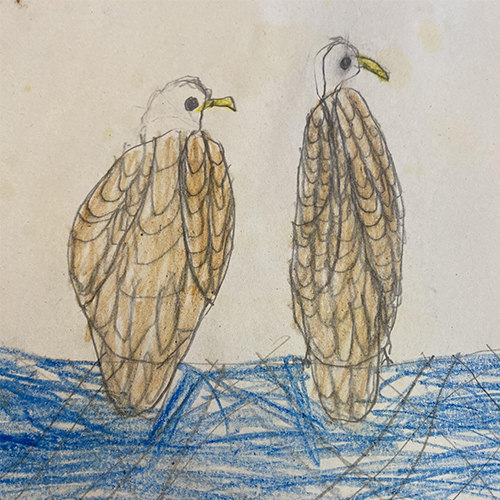
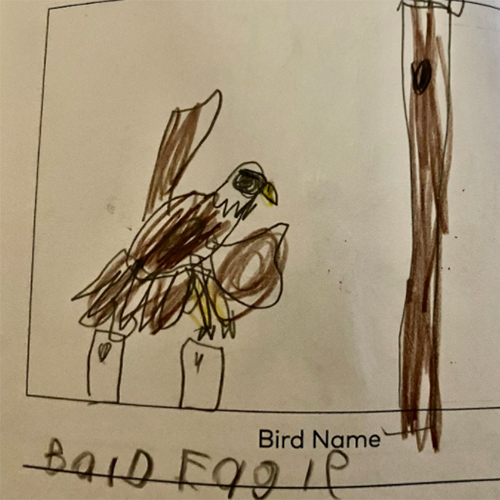
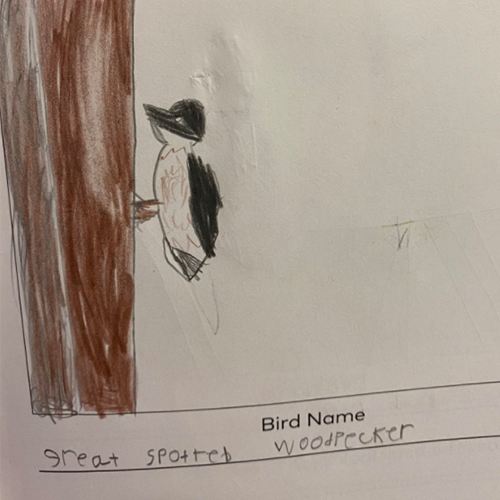
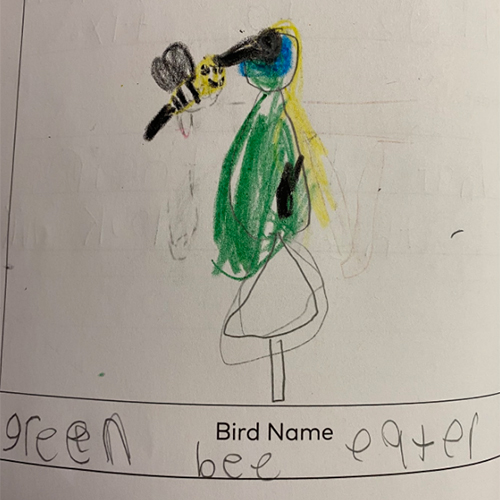
“Though the experience of teaching and learning is not the same as being in the classroom, our students and the first-graders have benefited by being able to maintain their relationships, even through remote learning,” Soriano said.
Brown and Soriano’s collaboration is part of the Wake the Arts initiative to expand the arts in far-reaching, interdisciplinary ways. Four first grade teachers – Lauren Hicks, Renet Parris, Brook Painter and Holly Say – collaborated with the Wake Forest students.
University photographer Ken Bennett provided bird photos taken in his backyard for Brown to use on the Flipgrid pages.
Categories: Experiential Learning, Research & Discovery
Wake Forest News
336.758.5237
media@wfu.edu
Meet the News Team
Headlines
Wake Forest in the News
Wake Forest regularly appears in media outlets around the world.




